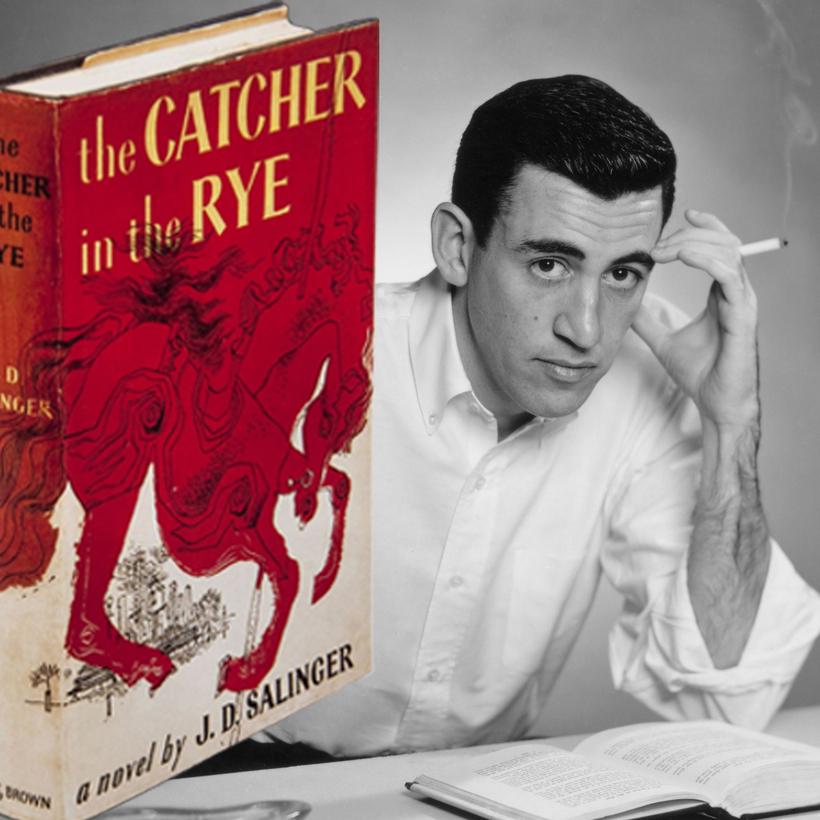If you can’t adapt, then appropriate. That’s the route some formidable independent directors have followed since J. D. Salinger died, in 2010. Even after his death, his estate upheld his mandate that The Catcher in the Rye, Franny and Zooey, and Salinger’s 32 short stories would never be adapted for film or television.
In the 90s, DreamWorks’s Steven Spielberg and Jeffrey Katzenberg, along with Miramax’s Harvey Weinstein, bid for the film rights to The Catcher in the Rye. The request went unanswered, or perhaps Salinger never received it, but it wouldn’t have mattered anyway. (Rumor had it that Katzenberg wanted to do it with an all-dog cast).

Now Salingerland has become a subgenre unto itself. The latest is The Holdovers, a new film from director Alexander Payne (Sideways). A coming-of-age story set in the 70s at a tony New England prep school, the film follows an acerbic but wildly unpopular teacher (Paul Giamatti) who is tasked to “babysit” the winter holiday’s “holdovers,” those pupils who aren’t able to return home. (Salinger himself was expelled from McBurney School, on New York’s Upper West Side, and later attended Valley Forge Military Academy, outside Philadelphia.)
Angus Tully, played by Dominic Sessa, could be a modern stand-in for Holden Caulfield: intelligent, literate, rebellious, talented, unbearable. He and his teacher become unlikely but like-minded companions who sling barbs and develop a quirky camaraderie.
Payne joins many others who carry the Salinger torch: Wes Anderson, Whit Stillman, Noah Baumbach, Ang Lee, the late Curtis Hanson (Wonder Boys), and Greta Gerwig, for starters.
Perhaps the most quintessential of all is Burr Steers’s Igby Goes Down, in which Kieran Culkin plays a wealthy teenager plagued by discontent. Like Caulfield and Salinger, Culkin’s character was thrown out of prestigious East Coast schools and finds himself drifting around New York City. As Roger Ebert wrote in his review, the “adolescent hero discovers that the world sucks, people are phonies.... Smart writing, skewed characters.”

Holden Caulfield favored a red hunting cap, which he called his “people-shooting hat.” In Lee’s The Ice Storm, sexually precocious Wendy Hood (Christina Ricci) rides her bike around suburban Connecticut wearing her hooded red-plaid poncho. In The Catcher in the Rye, Holden often visits the American Museum of Natural History because, as he says, nothing changes except for the graffiti on the bathroom wall. In Baumbach’s The Squid and the Whale, the museum’s free-floating diorama of a giant squid entwined in battle with a sperm whale is both a recurring theme and an homage.
With love and candor, Anderson told The New Yorker that he has been “inspired by and imitated and stolen to the best of my abilities” from Salinger’s oeuvre. More than a few critics have pointed out the resemblances between Royal Tenenbaum’s descendants and Salinger’s Glass-family characters, particularly Gwyneth Paltrow’s Margot Tenenbaum, who shares many qualities with Franny Glass. Besides their outsider personalities, they both chain-smoke and favor fur coats—Franny a sheared raccoon with silk lining, Margot a long caramel mink. (Paltrow’s was designed by Fendi.)

Salinger relished over-intellectualized banter among the young, troubled, and privileged. Stillman’s Metropolitan taps that in his cast of martini-swilling Upper East Side teenagers whose parents were in absentia. His clique of debutantes and their tuxedoed suitors coin the term the “U.H.B.,” for Urban Haute Bourgeoisie.
In Stillman’s The Last Days of Disco, there’s even a debate over Salinger’s best work between the characters played by Chloë Sevigny and Matt Ross. “My indie-comedy thesis is that since Salinger would not allow adaptations, independent directors have been given the freedom to create their own versions,” Stillman says. “I originally thought this most applied to Wes Anderson and myself, but there are others too, like Jim Jarmusch with Broken Flowers.”
Stillman says that Bill Murray could be considered as an adult version of Caulfield, thanks to his roles in Rushmore, The French Dispatch, Lost in Translation, and even The Life Aquatic with Steve Zissou (red nautical beanie!).
When Open City co-founder and editor Thomas Beller was researching his biography, J.D. Salinger: The Escape Artist, he visited one of the author’s Upper West Side apartments. “A sweet little old lady who had been living there, I think, for like 40 years let me in,” says Beller. One of the more endearing anecdotes he heard involved Salinger as a four-year-old. “Sonny,” as his parents called him, costumed in full Native American regalia, complete with feathered headdress, packed his suitcase with toy soldiers and tried to run away from home. He made it as far as the lobby of his apartment building, where he met his mother. “I’m running away,” he said. “But I stayed to say good-bye to you.”

Asked if he thought Salinger would have sold film rights if he had been cash poor, Beller says, “I still don’t think he would have compromised or sold out. He had strong ideas about his principles. Before Catcher, he was already famous as a short-story writer, and it was lucrative enough being published in The New Yorker, The Saturday Evening Post, Esquire, Story. Back then that was the equivalent to selling an HBO pilot.”
Steve Garbarino, the former editor of BlackBook magazine, began his career as a staff writer for The Times-Picayune. Once again based in New Orleans, he now contributes to The Wall Street Journal and New York and is the author of A Fitzgerald Companion


